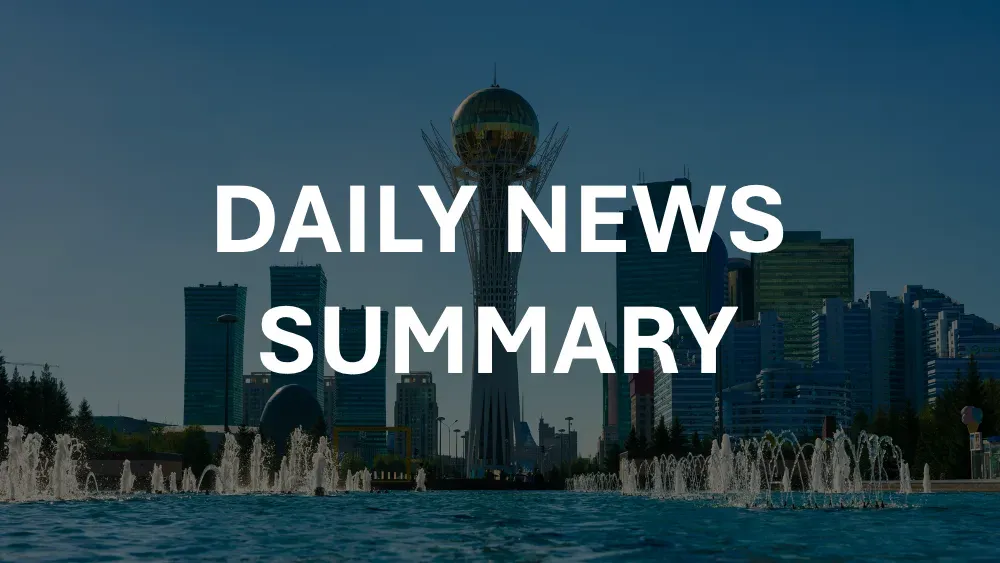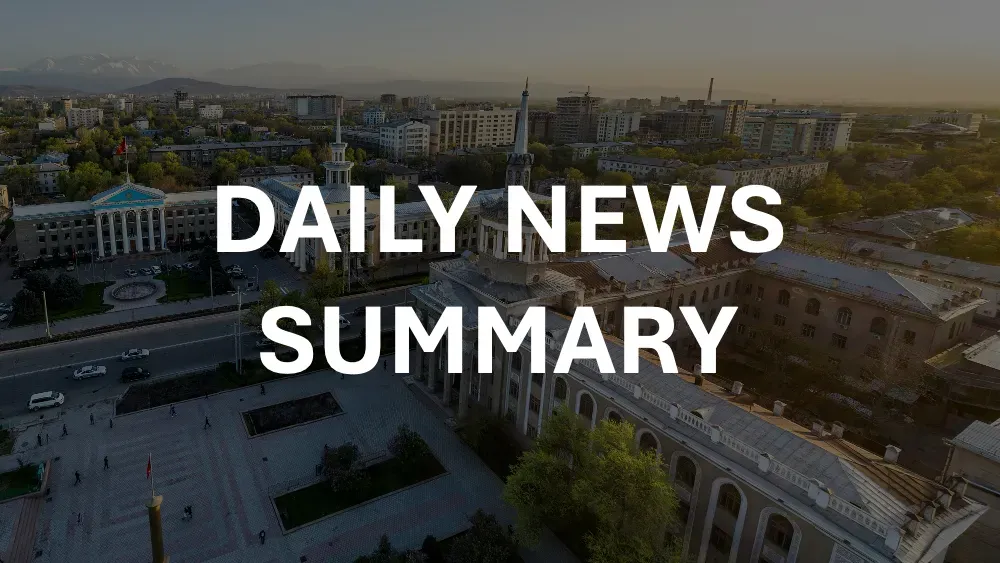📍 Get daily intelligence from Kazakhstan and Central Asia. Lexica News delivers local news that shapes global decisions—synthesized from local sources international media misses.
The Northern Aral Sea in Kazakhstan today contains 27 billion cubic meters of water, representing a 42% increase from recent years and marking one of the world's most successful large-scale environmental restoration projects. This dramatic recovery contrasts starkly with the catastrophic decline that began in the 1960s, when the Aral Sea was the world's fourth-largest lake. NASA satellite imagery documents how Kazakhstan transformed what appeared to be an irreversible environmental disaster into a functioning ecosystem that now supports an annual fish harvest of 8,000 tons and provides livelihoods for approximately one million people in the region.
The Northern Aral's transformation from 1960 to 2025 reveals three distinct phases: catastrophic decline (1960-2000), intervention and stabilization (2001-2010), and sustained recovery (2011-2025). This longitudinal analysis examines how specific policy interventions, international partnerships, and sustained investment created measurable environmental and economic improvements over nearly two decades.
Baseline Documentation: The Original Aral Sea (1960s)
Before Soviet irrigation projects began diverting its source rivers in the 1960s, the Aral Sea covered approximately 68,000 square kilometers and contained roughly 1,100 cubic kilometers of water. The lake supported a thriving fishing industry that produced more than 48,000 tons of fish annually by 1957, representing approximately 13% of the Soviet Union's total fish harvest.
The Aral Sea's ecosystem in this period sustained 20 fish species, including commercially valuable varieties like bream, roach, and pike-perch. The region's economy centered on fishing, with processing facilities in Aralsk, Kazakhstan, and Muynak, Uzbekistan. Local communities of approximately 60,000 people depended directly on fishing and related industries, while the broader regional population of over 400,000 benefited from the sea's moderating climatic effects and agricultural productivity.
Water salinity in the original Aral Sea averaged 10 grams per liter, similar to other large freshwater lakes. The Amu Darya and Syr Darya rivers delivered approximately 56 cubic kilometers of water annually to maintain the sea's volume and support its diverse ecosystem. Regional precipitation patterns and local agriculture benefited from the sea's influence on microclimate conditions.
Evolution Analysis: Three Phases of Transformation
Phase 1: Catastrophic Decline (1960-2000)
The systematic diversion of the Amu Darya and Syr Darya rivers for cotton and rice irrigation projects began in earnest during the 1960s. Soviet planners diverted up to 90% of the rivers' flow to support agricultural expansion across Kazakhstan, Uzbekistan, and Turkmenistan. This dramatic reduction in inflow triggered an environmental cascade that transformed the Aral Sea from a thriving ecosystem into what observers called an ecological disaster.
By 1987, commercial fish harvests had plummeted to zero as rising salinity levels exceeded the tolerance of native fish species. The sea's surface area contracted by approximately 50% during this period, and water levels dropped by over 16 meters. Salinity increased from 10 to over 100 grams per liter in some areas, creating conditions hostile to most aquatic life.
The economic impact devastated regional communities. The fishing fleet in Aralsk found itself stranded over 100 kilometers from the retreating shoreline. Processing facilities closed, unemployment soared, and an estimated 40,000 people migrated away from the region during the 1990s. The exposed seabed, covering thousands of square kilometers, became a source of toxic dust storms containing salt and agricultural chemicals.
Phase 2: Intervention and Stabilization (2001-2010)
Kazakhstan's decisive intervention began in 2001 when the government partnered with the World Bank to launch the Syr Darya Control and Northern Aral Sea Phase 1 project. The $86 million initiative, with $64.5 million financed by the World Bank, focused specifically on restoring the Northern Aral Sea rather than attempting to restore the entire water body.
The project's centerpiece was the Kokaral Dam, completed in August 2005. The 13-kilometer concrete structure separated the Northern and Southern Aral seas, preventing water from flowing out of the northern basin into the lower-elevation southern basin. This engineering solution addressed the fundamental problem: without intervention, any water directed to the region would flow into the vast southern basin and evaporate.
Results exceeded expectations. Between 2005 and 2008, water levels in the Northern Aral rose 12 meters, from 30 meters to 42 meters depth. The water surface area expanded from 2,550 square kilometers in 2003 to 3,300 square kilometers by 2008. Most significantly, salinity dropped from approximately 30 grams per liter to 8 grams per liter, creating conditions suitable for fish reproduction.
Fish populations responded rapidly to improved conditions. By 2006, fishermen were already harvesting catches for export to Ukraine, marking the first commercial fishing in the Northern Aral in nearly two decades. The economic revival attracted former residents back to the region, reversing the population decline that had characterized the 1990s.
Phase 3: Sustained Recovery (2011-2025)
The period from 2011 to 2025 demonstrates sustained progress built on the foundation established during Phase 2. Kazakhstan's consistent water management policies and continued international partnerships have produced measurable improvements across multiple indicators.
Water volume has continued expanding throughout this period. In 2024, Kazakhstan directed 2.6 billion cubic meters of water into the Aral Sea, compared to just 816 million cubic meters in 2022. This represents a threefold increase in water allocation, reflecting improved water management infrastructure and political commitment to the restoration program.
Fish production demonstrates the ecosystem's recovery. Annual harvests increased from 695 metric tons in 2005 to 6,000 metric tons by 2016, representing a 763% increase. Current annual yields of 8,000 tons now support a viable commercial fishing industry, though still significantly below historical peaks.
The restoration has expanded beyond water management to include comprehensive ecosystem rehabilitation. Between 2021 and 2024, Kazakhstan planted 4.4 million seedlings on 475,000 hectares of former seabed. An additional 428,000 hectares are scheduled for reforestation in 2025, bringing the total restored area to 1.1 million hectares.
Pattern Analysis: Key Success Factors
Several consistent patterns emerge from the 65-year transformation of the Northern Aral Sea. The analysis reveals that successful restoration required specific conditions and approaches that differentiated this project from other environmental recovery attempts.
Targeted Geographic Focus: Kazakhstan's decision to focus exclusively on the Northern Aral Sea, rather than attempting to restore the entire water body, proved crucial. World Bank hydrology experts concluded that restoring the entire sea would require more water than could realistically be allocated. The northern basin's smaller size and geographic separation made restoration technically feasible with available resources.
Engineering Solutions Preceding Ecosystem Interventions: The Kokaral Dam's construction in 2005 created the physical conditions necessary for ecosystem recovery. Without this infrastructure, subsequent water allocation would have flowed into the southern basin and evaporated. The dam's success demonstrated that environmental restoration often requires engineering solutions to address fundamental hydrological problems.
Sustained Political Commitment: Kazakhstan's consistent support for the restoration program across multiple presidential administrations has been essential for long-term success. President Tokayev's election as IFAS President for 2024-2026 with a work plan including over 40 initiatives demonstrates continued high-level commitment to the program.
International Partnership Integration: The partnership with the World Bank provided not only financial resources but also technical expertise and project management capabilities. The second phase project, where the World Bank finances 85% of costs with Kazakhstan contributing 15%, shows the continued value of this partnership model.
Economic Integration with Environmental Goals: The restoration program explicitly linked environmental recovery with economic development for local communities. Rather than treating restoration as purely an environmental issue, Kazakhstan designed the program to revive the regional fishing industry and create employment opportunities for approximately 2,000 people.
Understand Kazakhstan Like an Insider
This analysis draws from extensive research, but the story continues to evolve daily. Lexica synthesizes breaking developments from dozens of Kazakh news sources—from mining policy changes to local protests that never make international headlines.
Our daily intelligence briefs help executives, diplomats, and researchers track:
- Regulatory shifts affecting foreign investment
- Local opposition to development projects before they escalate
- Market dynamics that signal opportunity or risk
- Political developments that reshape the business landscape
Current Trajectory: Continued Expansion and Regional Leadership
Recent developments indicate the restoration program is entering a new phase of expansion and regional influence. Kazakhstan's current chairmanship of the International Fund for Saving the Aral Sea (IFAS) for 2024-2026 positions the country to lead broader regional restoration efforts based on lessons learned from the Northern Aral success.
Current water management achievements exceed original targets. The Northern Aral Sea now contains 24.1 billion cubic meters of water, surpassing the 20.6 billion cubic meters target set in Kazakhstan's Water Resources Management Concept for 2025. This over-achievement suggests that restoration capacity may be greater than originally projected.
The ecosystem continues expanding its biological diversity. Twenty-two fish species now inhabit the Northern Aral, nearly matching the pre-disaster total of 24 species. The return of commercially valuable species like bream, roach, and pike-perch has reestablished viable fishing communities in Aralsk and surrounding areas.
New initiatives are expanding the restoration program's scope. The partnership with the French Development Agency provides €2 million for 2025-2026 to support water requirement analysis and educational programs. USAID's Environmental Restoration project has created a 500-hectare demonstration site for testing restoration techniques that could be scaled across the region.
Technological innovations are improving restoration efficiency. Laser leveling technology on rice fields in Kyzylorda region has saved 200 million cubic meters of water that was redirected to the Northern Aral while increasing crop yields from 40-55 to 70-80 centners per hectare. This demonstrates how restoration programs can simultaneously achieve environmental and agricultural productivity goals.
Conclusion
The Northern Aral Sea's transformation from environmental disaster to restoration success represents a 65-year journey that demonstrates both the devastating consequences of unsustainable resource management and the potential for coordinated restoration efforts. The quantitative evidence is compelling: water volume increased by 42% to 27 billion cubic meters, fish harvests recovered to 8,000 tons annually, and salinity decreased fourfold to levels supporting diverse aquatic life.
Three critical inflection points shaped this trajectory: the initial irrigation diversions of the 1960s that triggered catastrophic decline, the 2005 completion of the Kokaral Dam that enabled stabilization, and the sustained expansion of water allocation since 2020 that has driven current recovery levels. Each phase required different approaches, from engineering solutions to ecosystem management to regional cooperation frameworks.
The most significant factors driving change were targeted geographic focus on the restorable northern basin, sustained political commitment across multiple administrations, international partnership providing technical expertise and financing, and integration of environmental goals with economic development for local communities. These elements created conditions for measurable improvement across ecological, economic, and social indicators.
Current trajectories suggest the restoration will continue expanding through 2030 and beyond. Water volume targets are being exceeded, fish species diversity is approaching pre-disaster levels, and reforestation programs are rehabilitating over one million hectares of former seabed. Kazakhstan's leadership of IFAS through 2026 positions the country to extend restoration techniques across the broader Aral Sea basin, potentially creating the framework for addressing one of the world's most significant environmental disasters.
The Northern Aral Sea restoration demonstrates that large-scale environmental recovery is achievable with appropriate technical approaches, sustained commitment, and coordinated international support. While the broader Aral Sea region continues facing significant challenges, Kazakhstan's success provides both practical restoration methodologies and evidence that seemingly irreversible environmental damage can be substantially reversed through systematic intervention.
Frequently Asked Questions
How reliable is the historical data on Aral Sea recovery?
The restoration data combines multiple authoritative sources with consistent methodologies. NASA satellite imagery provides continuous visual documentation from 1964 to present, while Kazakhstan's Ministry of Water Resources reports water volume measurements. The World Bank project documentation offers independent verification of key metrics. Some data gaps exist for the 1970s-1990s period, but post-2000 measurements show consistent reporting across international and government sources.
What caused the biggest changes in restoration progress?
The Kokaral Dam completion in 2005 represents the single most significant change driver, enabling the Northern Aral to retain water rather than losing it to the southern basin. Water levels rose 12 meters between 2005-2008 directly following dam construction. The second major driver was increased water allocation: Kazakhstan directed 2.6 billion cubic meters in 2024 compared to 816 million cubic meters in 2022, representing a threefold increase that accelerated recent recovery.
How does this compare to regional restoration attempts?
The Northern Aral represents the only large-scale success among Aral Sea restoration efforts. The Southern Aral continues shrinking, with its eastern basin completely drying by 2014. Other Central Asian lake restoration projects, such as those around Issyk-Kul, focus on preservation rather than recovery from catastrophic loss. The Northern Aral's success stems from geographic advantages - smaller size and natural barriers that made engineering solutions feasible - not available to other regional water bodies.
What methodology changes affect data comparability over time?
Measurement approaches have evolved significantly since the 1960s. Early Soviet data relied on manual depth measurements and estimated surface areas, while current monitoring uses satellite imagery and GPS-based surveying. Fish catch data shifted from Soviet-era collective farm reporting to current commercial licensing systems, making direct comparisons approximate rather than exact. However, the magnitude of changes - from 48,000 tons annually in 1957 to zero in 1987 to 8,000 tons currently - exceeds methodological variations.
What factors correlate most strongly with recovery milestones?
Water allocation volume shows the strongest correlation with ecosystem recovery indicators. Periods of increased flow allocation - particularly the 2005 dam completion and 2020-2025 water allocation increases - directly preceded improvements in fish populations, salinity reduction, and surface area expansion. International financing correlates with sustained progress phases, while periods of reduced external support (1990s) coincided with continued decline despite some policy interventions.
How do current fish populations compare to pre-disaster levels?
Current fish production of 8,000 tons annually remains substantially below the 1957 peak of 48,000 tons for the entire Aral Sea. However, this comparison includes the much larger southern basin that produced most historical catch. Species diversity has nearly recovered, with 22 species currently present compared to approximately 24 historically. The fishing industry now operates sustainably within ecosystem capacity rather than the intensive exploitation model of the Soviet era.
What long-term trends should stakeholders monitor?
Key indicators for sustained recovery include annual water allocation volumes, fish population diversity trends, and salinity measurements over seasonal cycles. Climate change impacts on source river flows represent the primary long-term risk, requiring monitoring of Syr Darya basin precipitation and glacial melt patterns. Regional development pressures and irrigation demand changes will determine whether current water allocation levels remain sustainable through 2030 and beyond.
Track Kazakhstan with Local Intelligence
The rare earth story exemplifies why local sources matter. While international media reports MOUs and ministerial visits, Kazakh outlets cover the community protests, water disputes, and regulatory changes that actually determine project outcomes.
Lexica delivers what you're missing:
- Daily briefs at 7AM Astana time covering 40 top stories from politics to economics
- Full-text synthesis from sources in Kazakh
- Searchable archive to track how today's announcements connect to yesterday's promises
- Multi-country coverage across Central Asia for regional context
Whether you're evaluating investment opportunities, monitoring supply chain risks, or analyzing geopolitical developments, local intelligence reveals what international headlines obscure.










